Located in Bac Nhan Thap hamlet (Nhon Hau commune, An Nhon town), about 23 kilometers from Quy Nhon City, Nhan Son Pagoda may appear modest in architecture, but it carries immense historical and artistic value as a fusion of Cham and Vietnamese cultures.
Nhan Son Pagoda was officially recognized as a national architectural heritage site in 2001.
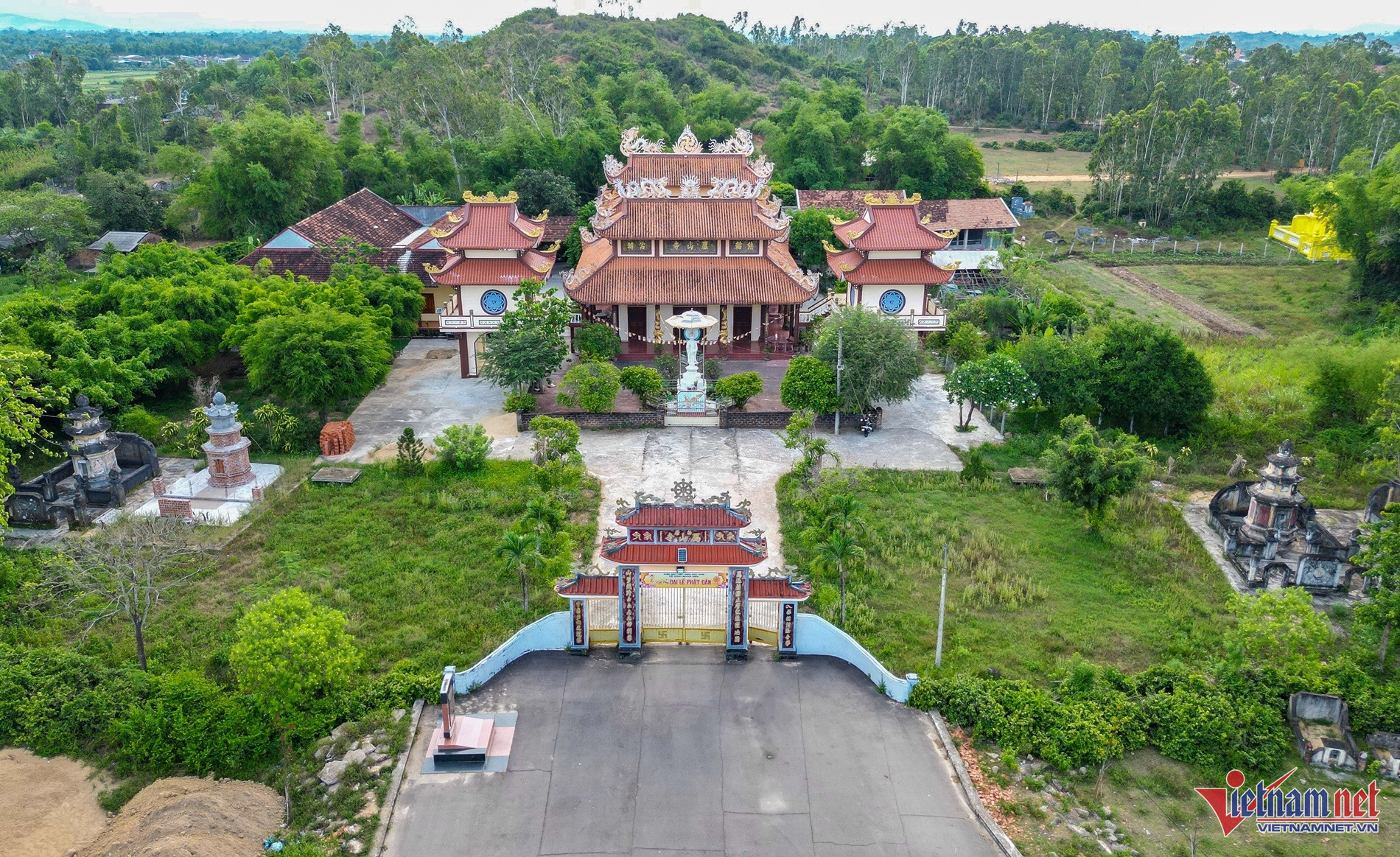
“Mr. Black” and “Mr. Red” are actually Dvarapala statues - traditional Cham stone guardians typically placed at temple entrances to protect the faith.
Over time, Vietnamese locals added beards, hats, and robes to these statues, giving them a closer resemblance to protective deities in local beliefs.
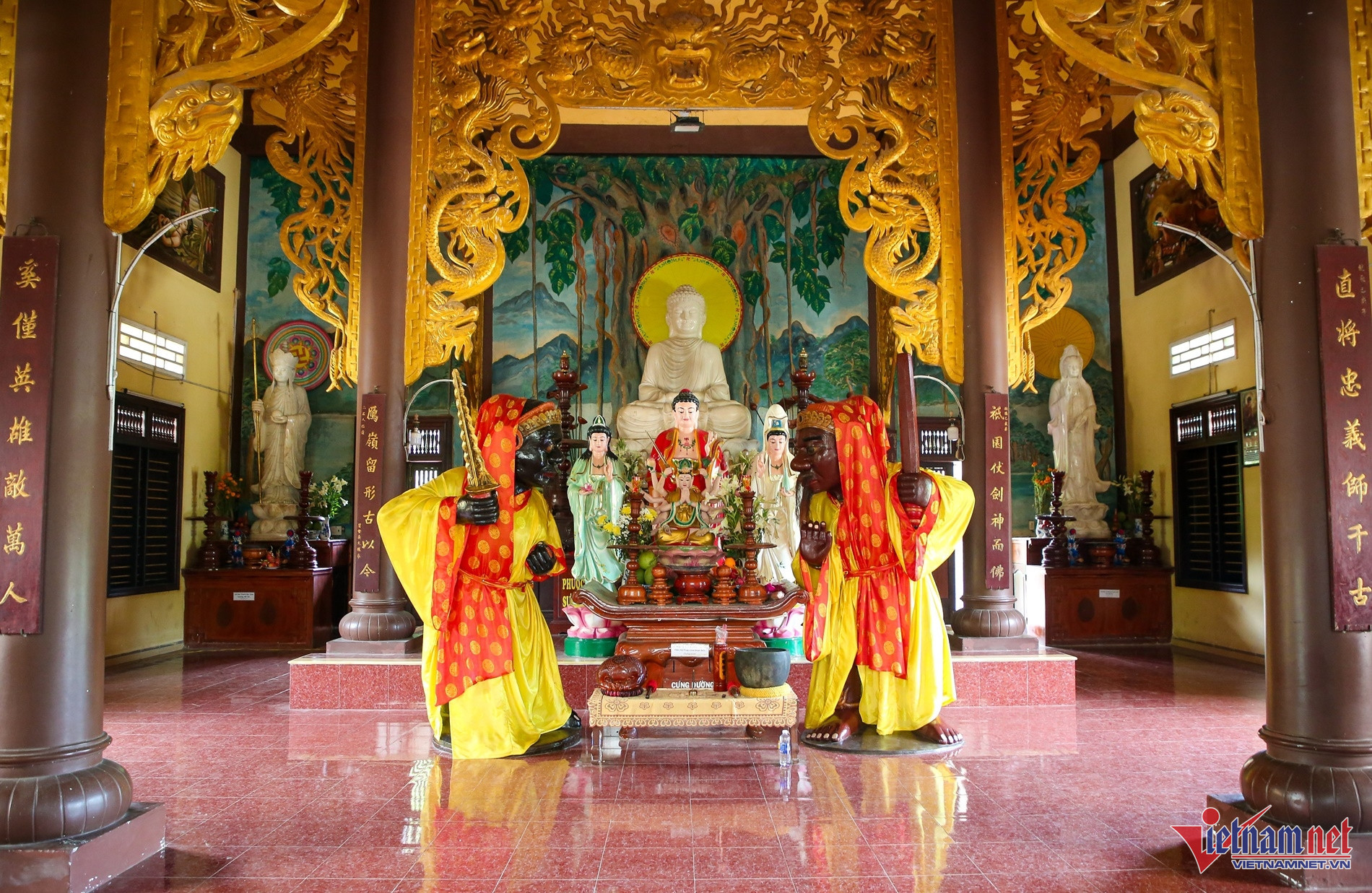
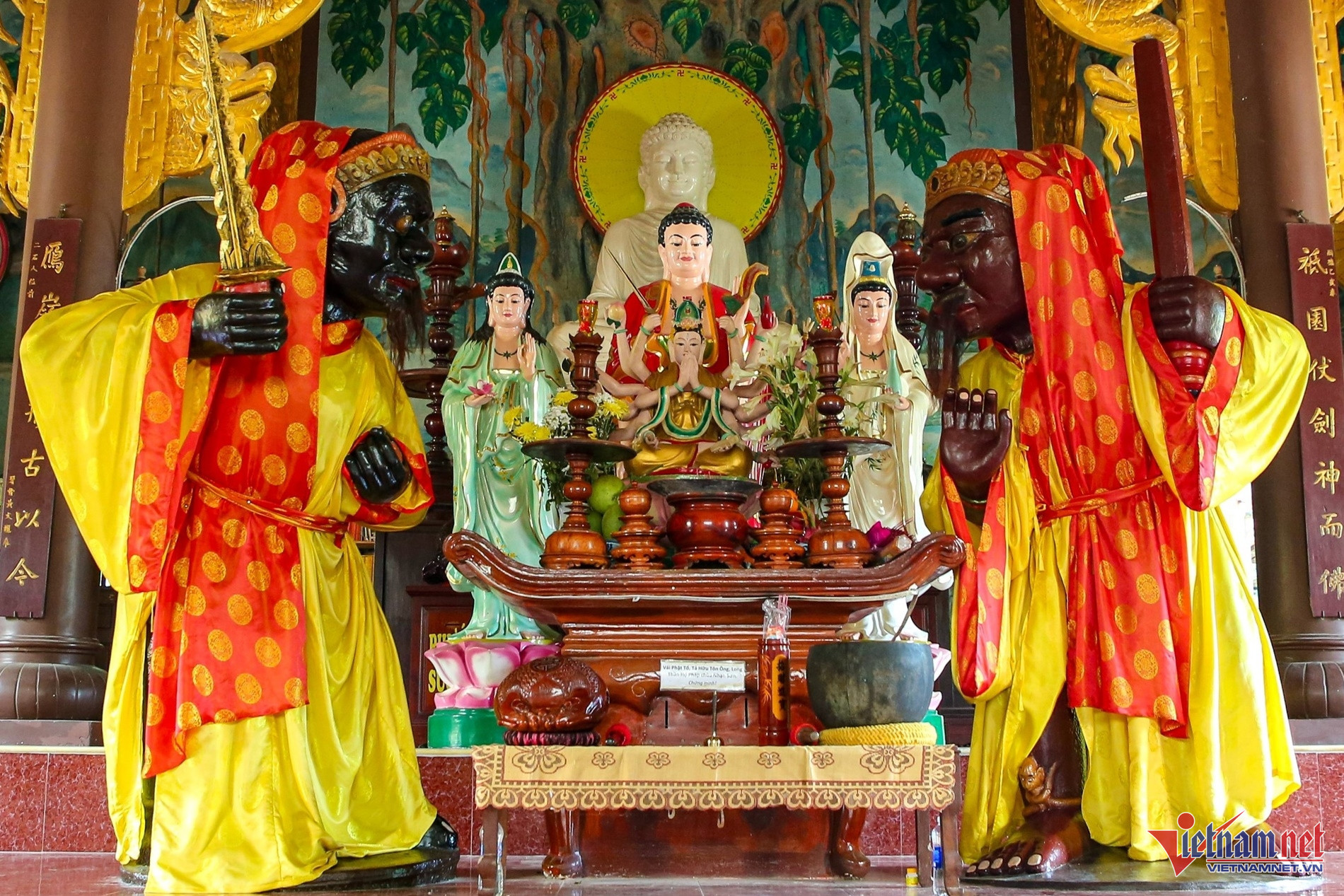
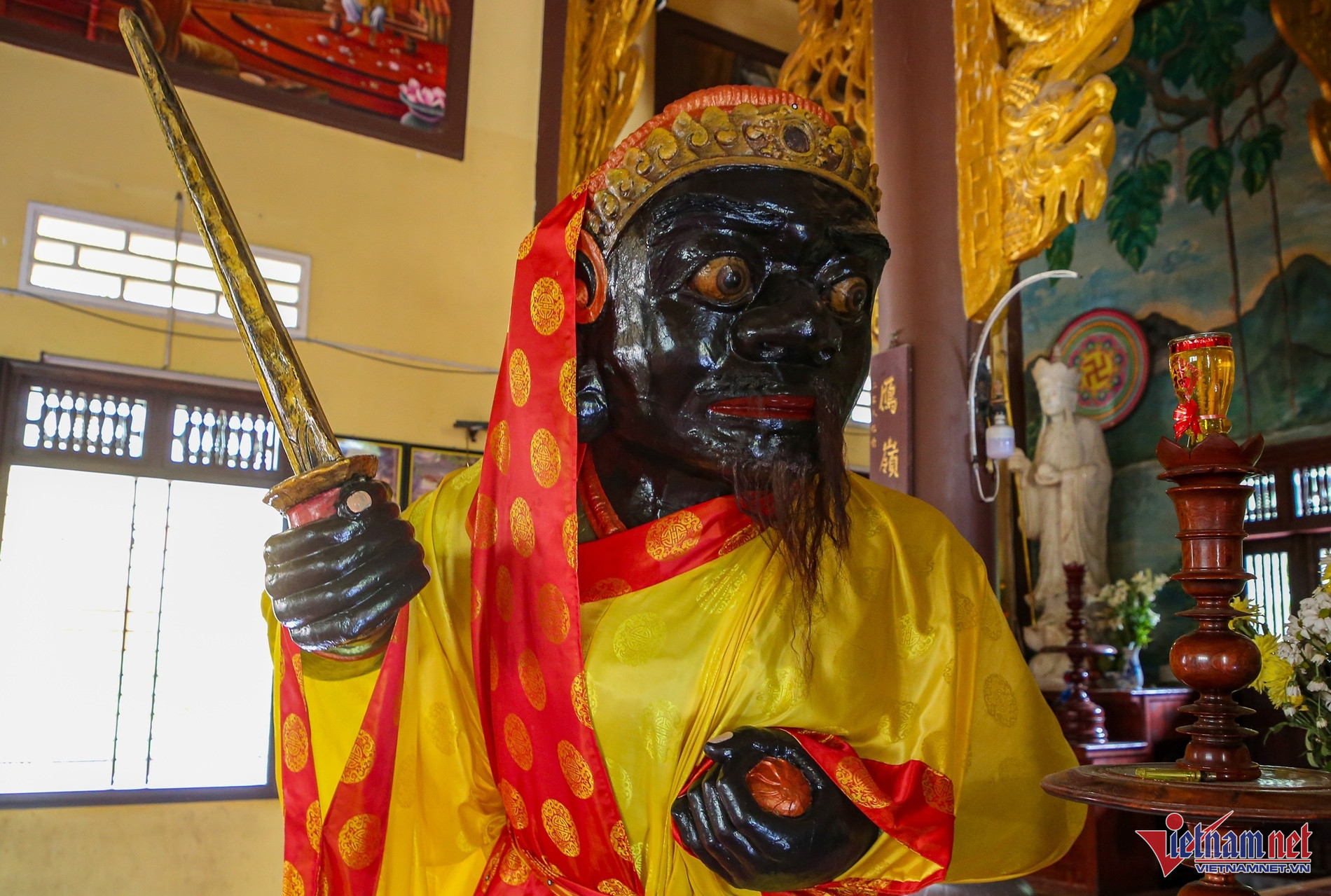
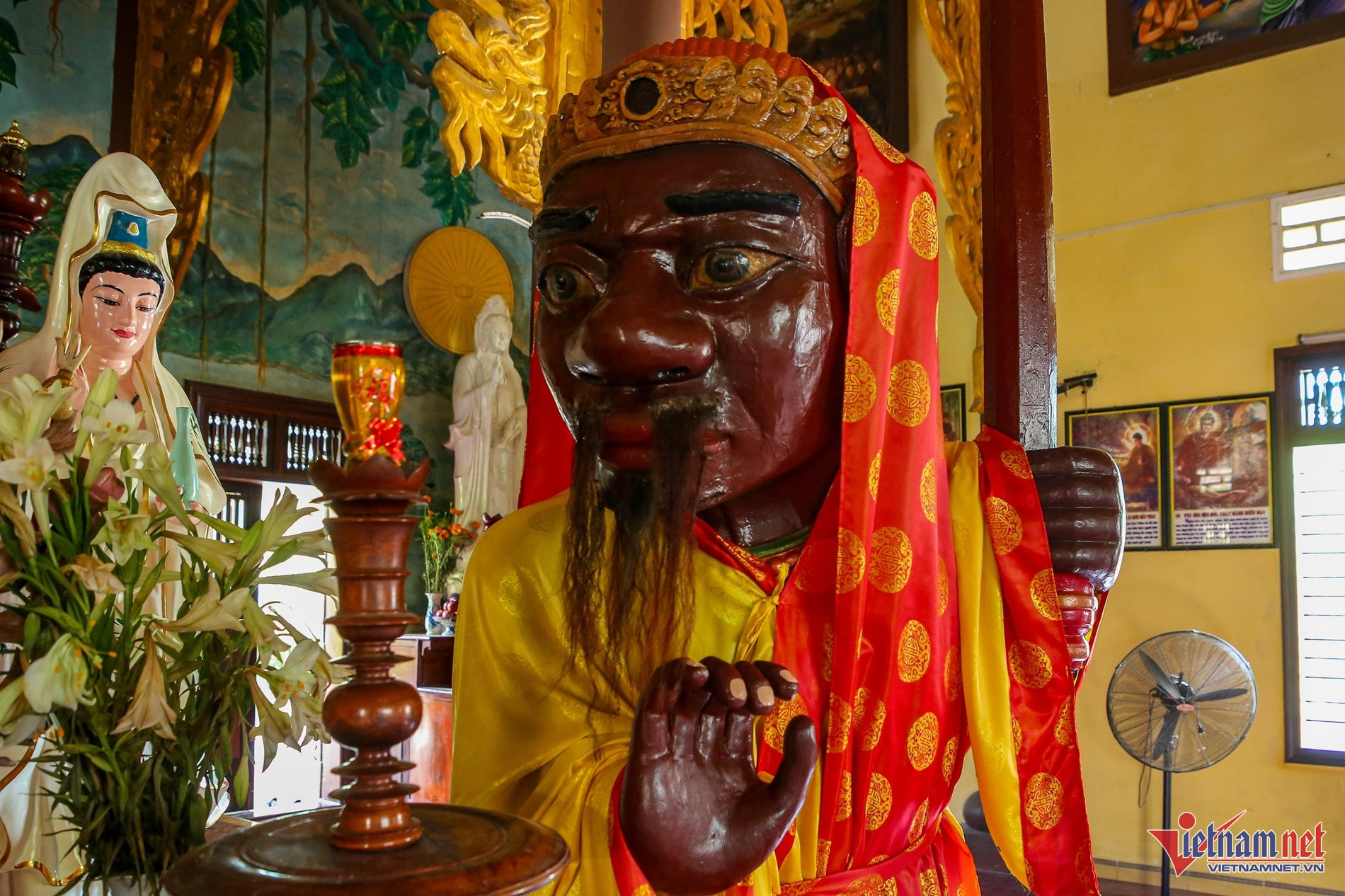
According to the Cultural Heritage Department, these statues are the largest, most pristine, and final remaining pair of guardian figures representing the Thap Mam style - the last and most radiant phase of Cham sculpture, named after the Thap Mam sanctuary, once a major religious and artistic center.
What makes these statues unique is their blend of Cham and Vietnamese cultural elements.
The statues wear crowns made from stylized lotus petals, with their hair tied into large buns at the back.
Each statue weighs around 800 kilograms. Mr. Red stands 2.42 meters tall, 1.5 meters wide, and 0.72 meters thick. Mr. Black measures 2.45 meters in height, 1.52 meters in width, and 0.7 meters in thickness.
Though similar in form, each statue displays unique decorative patterns upon closer inspection.
Their faces are sculpted with thick eyebrows, bulging eyes, flared noses, large ears, and pronounced neck veins, creating an intimidating yet lifelike presence. Mr. Black wields a sword, while Mr. Red holds a ceremonial staff.
Interestingly, researchers confirm that these statues have remained in their original positions since the Cham era, situated near the remnants of an ancient temple behind the pagoda.
At their ankles are naga-shaped bracelets, differing in color between the two.
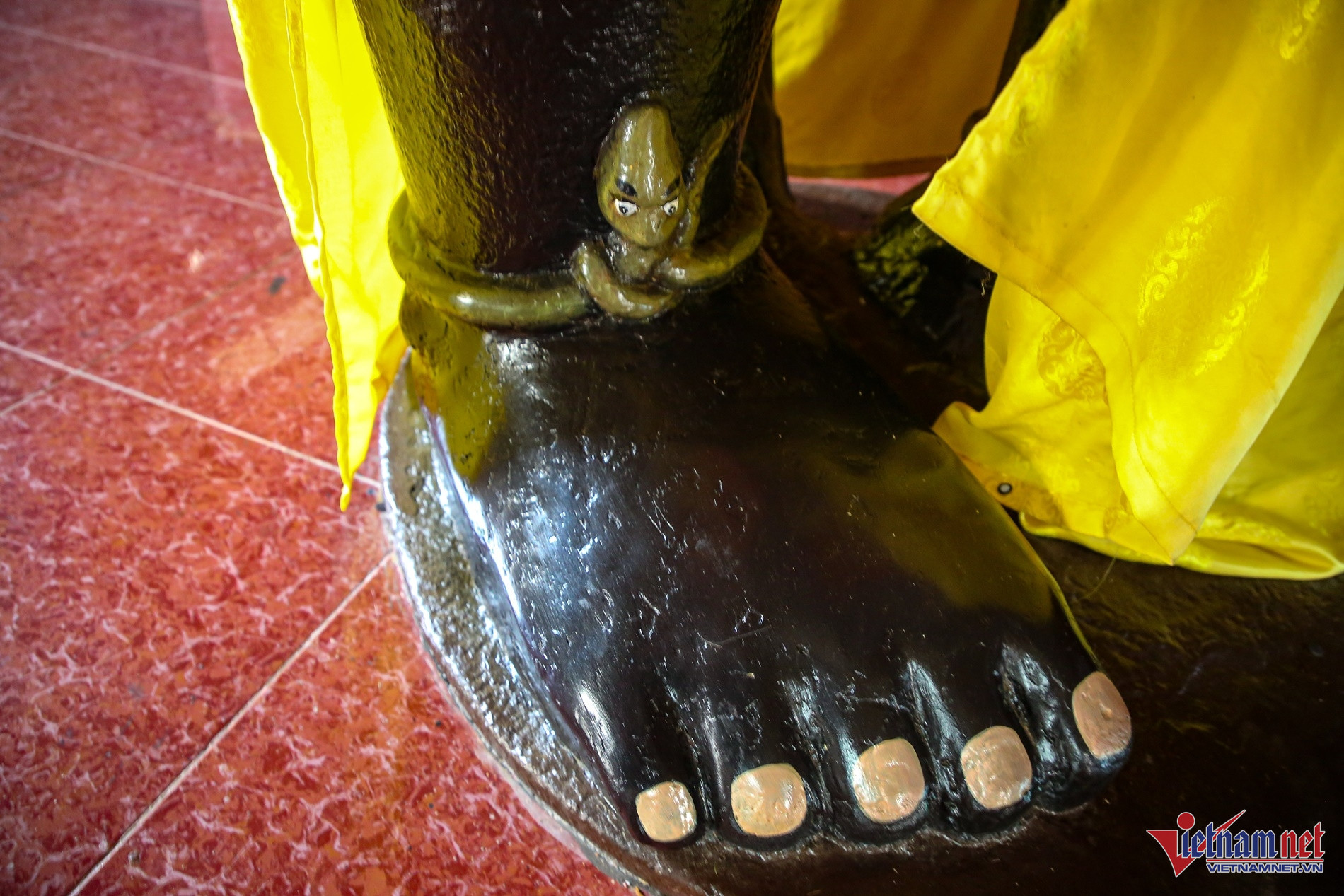
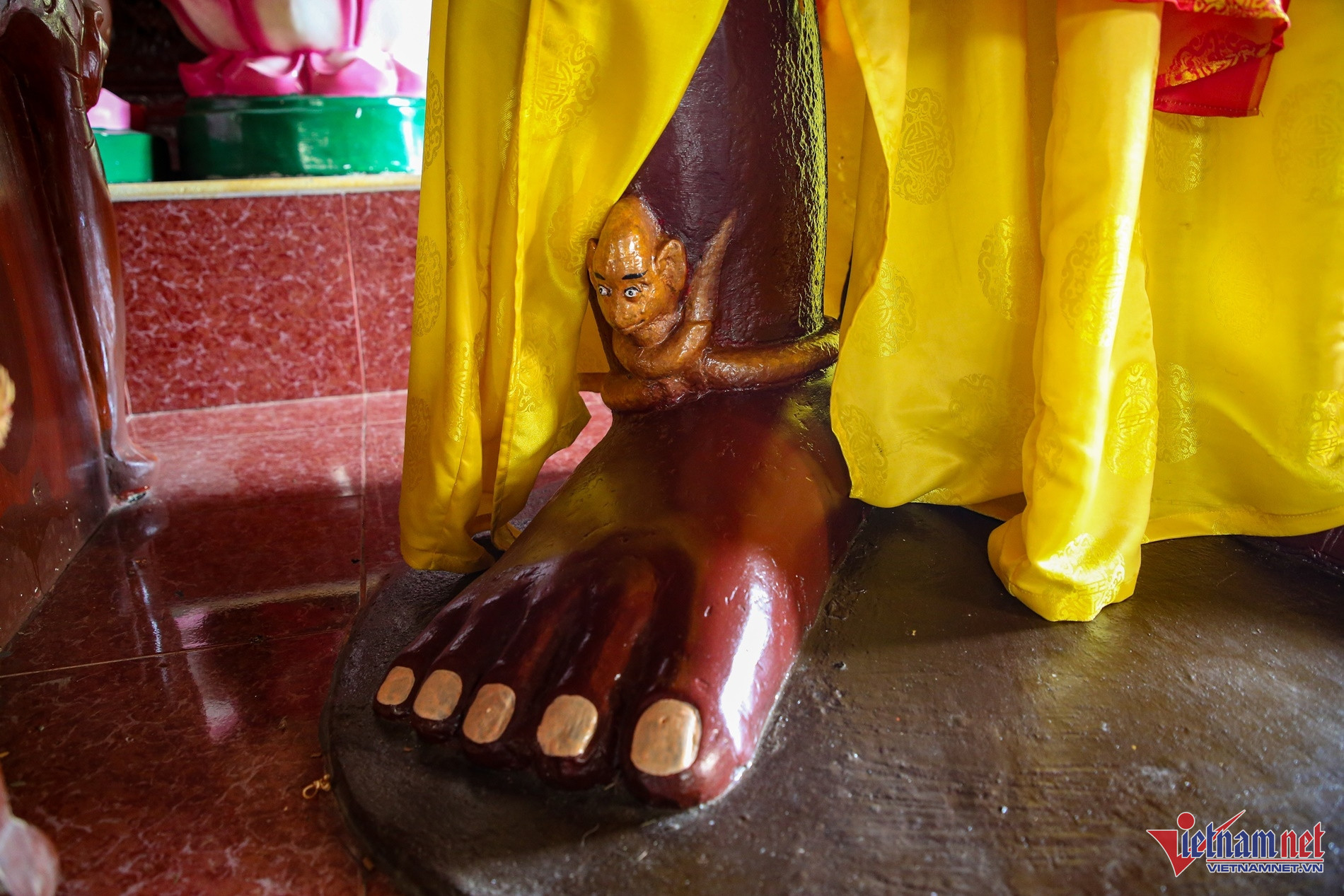
It was formerly named Thach Cong Tu, Song Nghia Tu, and Nhan Son Linh Tu.
In the 16th century, Venerable Thich Chi Man assumed leadership and undertook major renovations, renaming it Nhan Son Pagoda after the swallow-shaped field in front and the mountain behind.
The pagoda honors both Buddhist tradition and the two guardian statues - Mr. Red symbolizing virtue and Mr. Black representing protective strength.
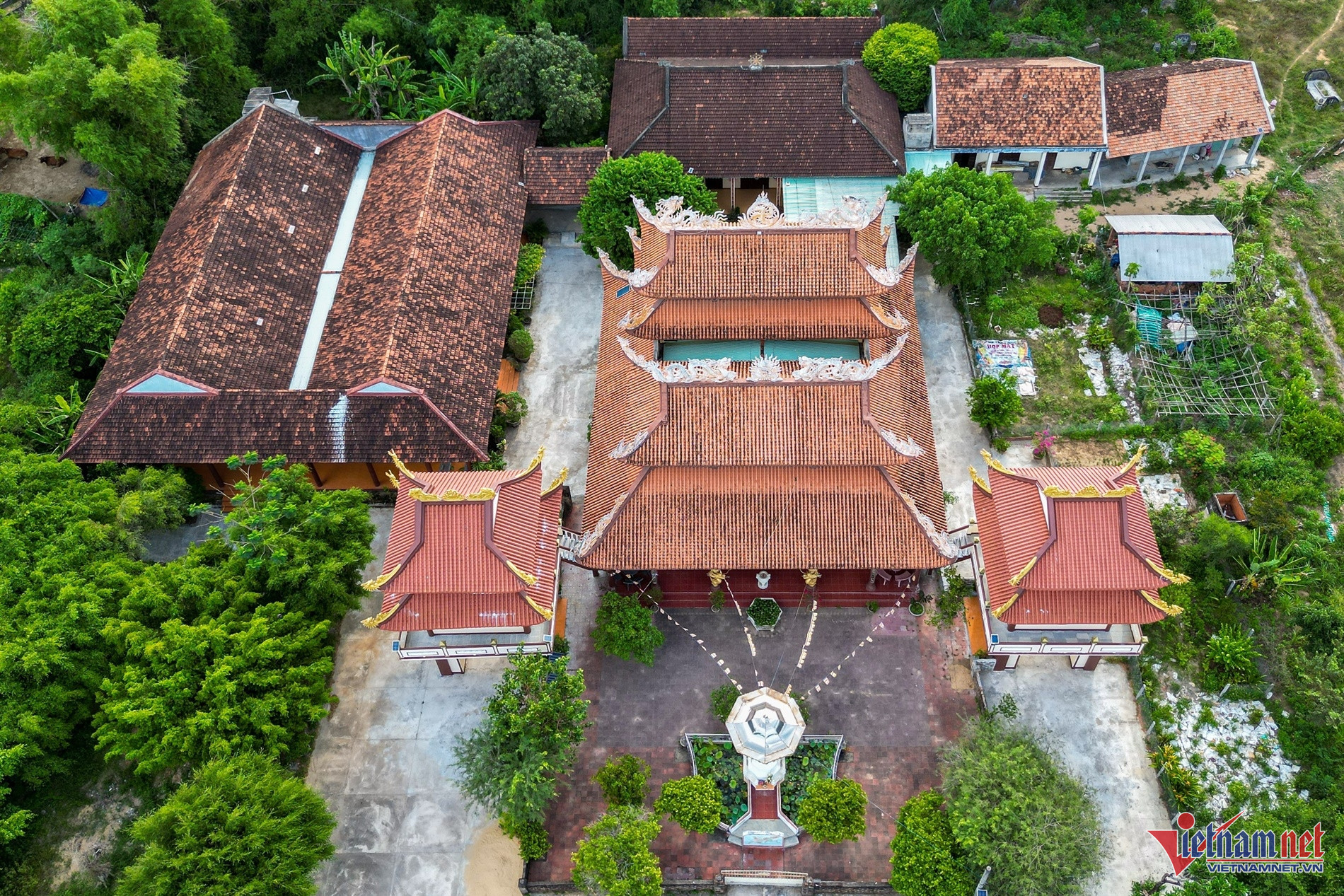
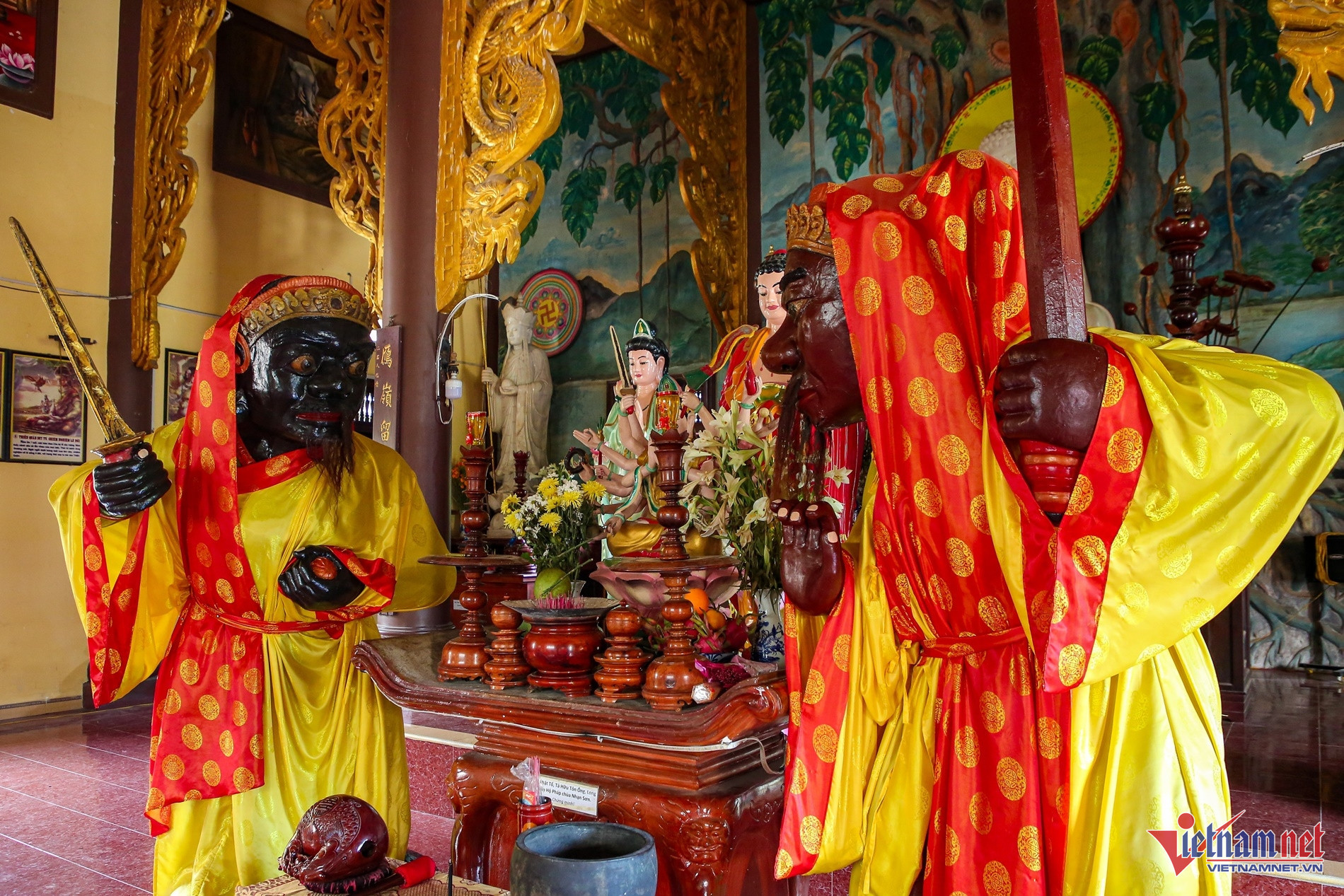
The statues showcase exceptional Cham craftsmanship, with vivid realism unlike the stylized features seen in other reliefs and guardian figures.
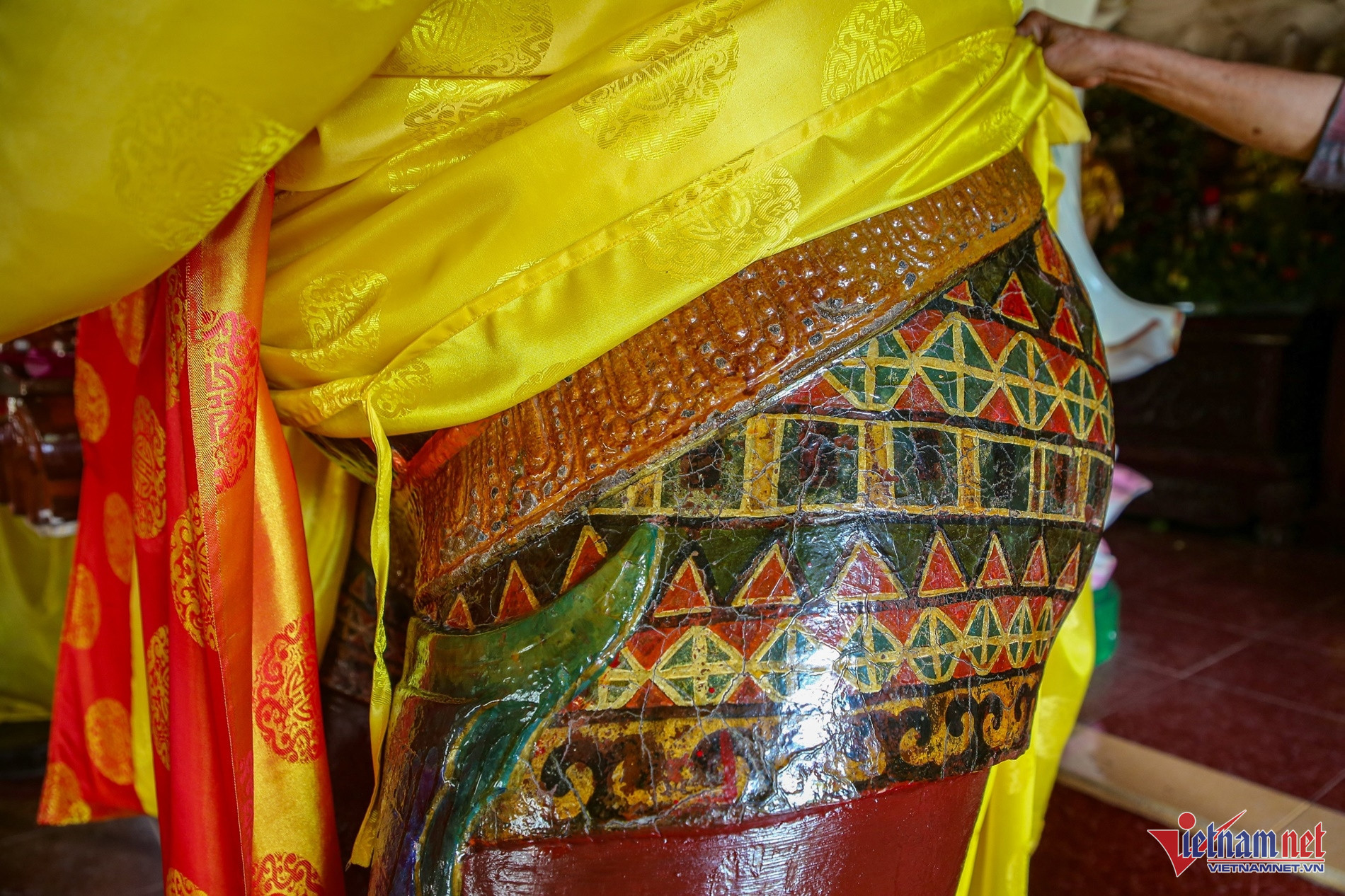
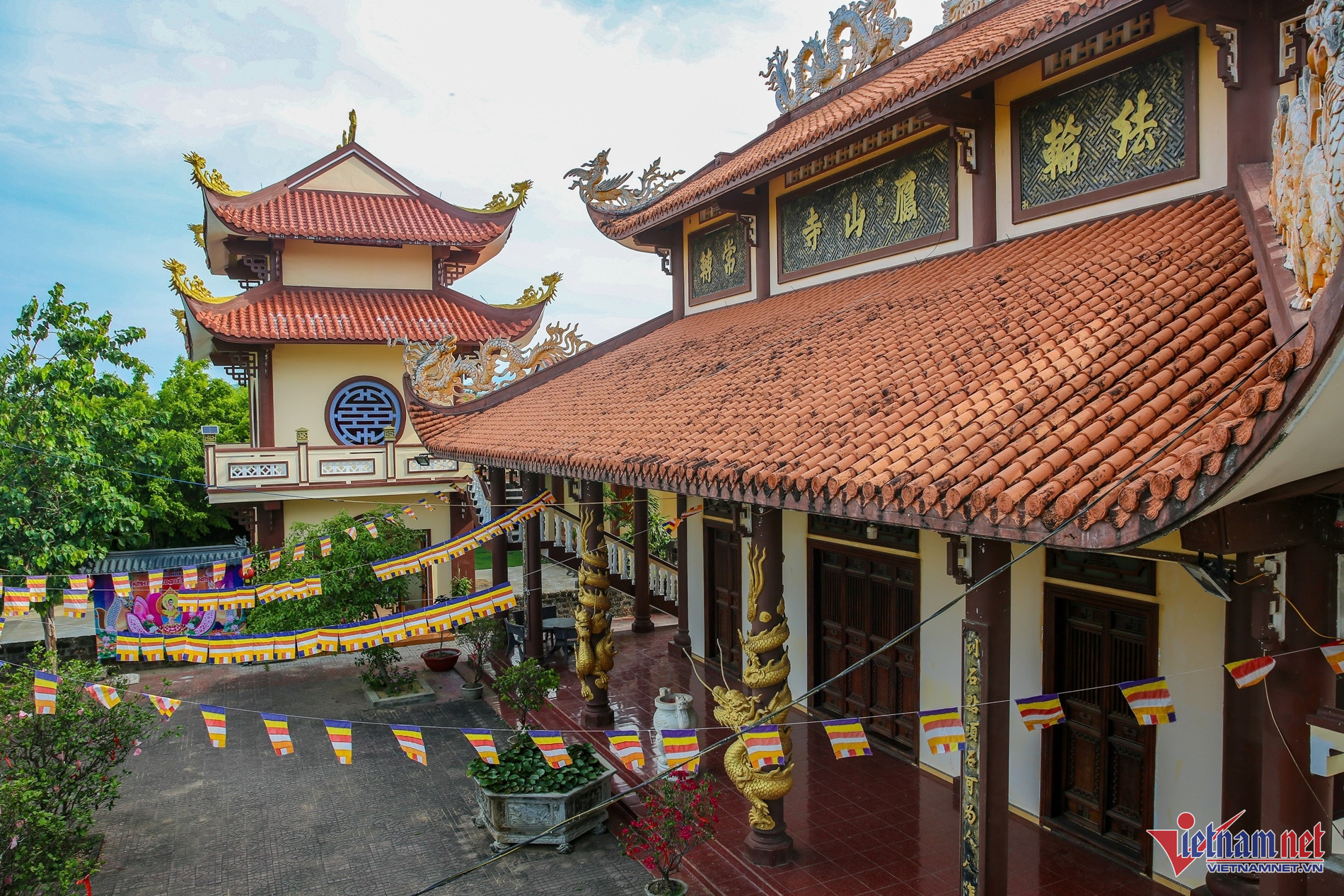
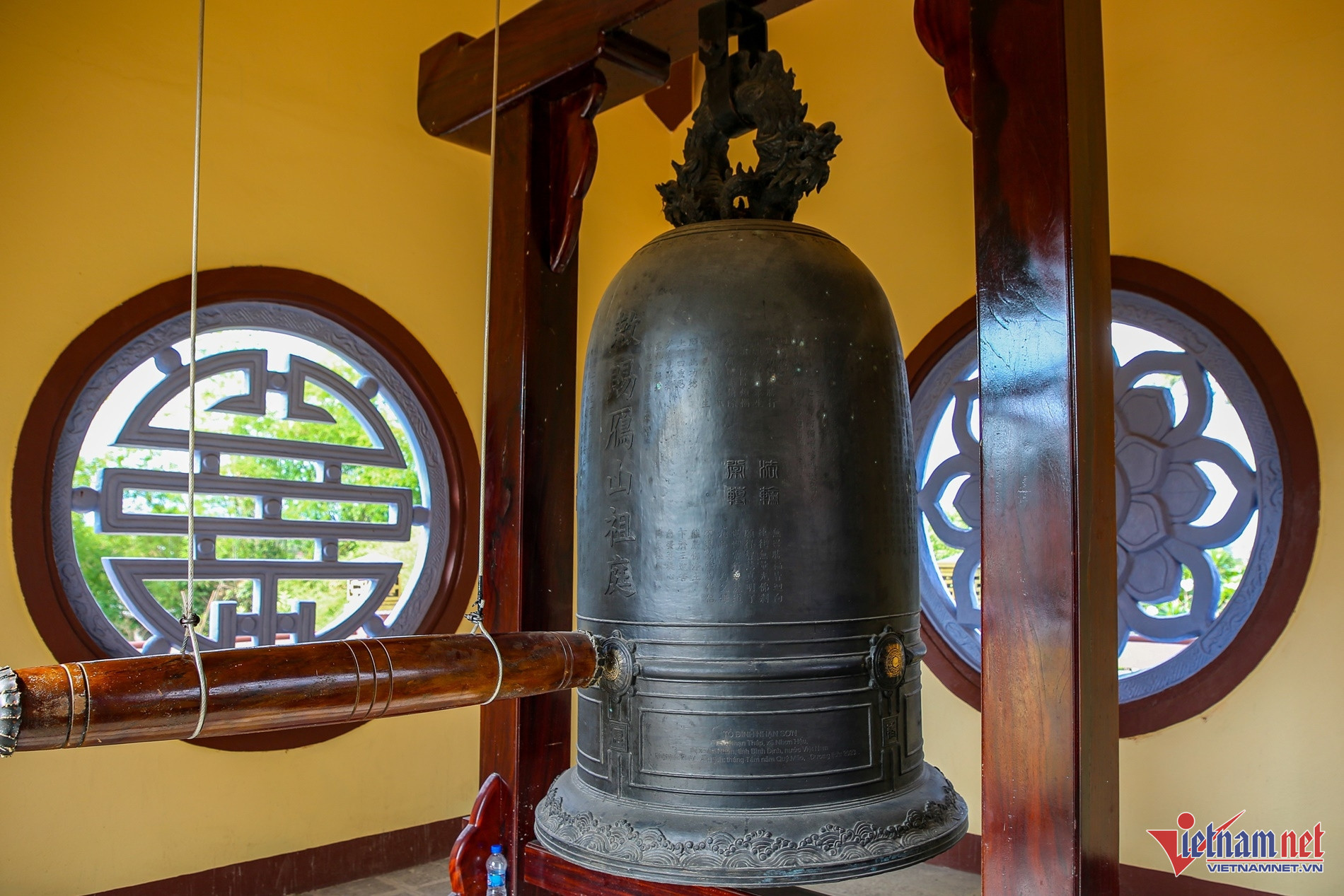
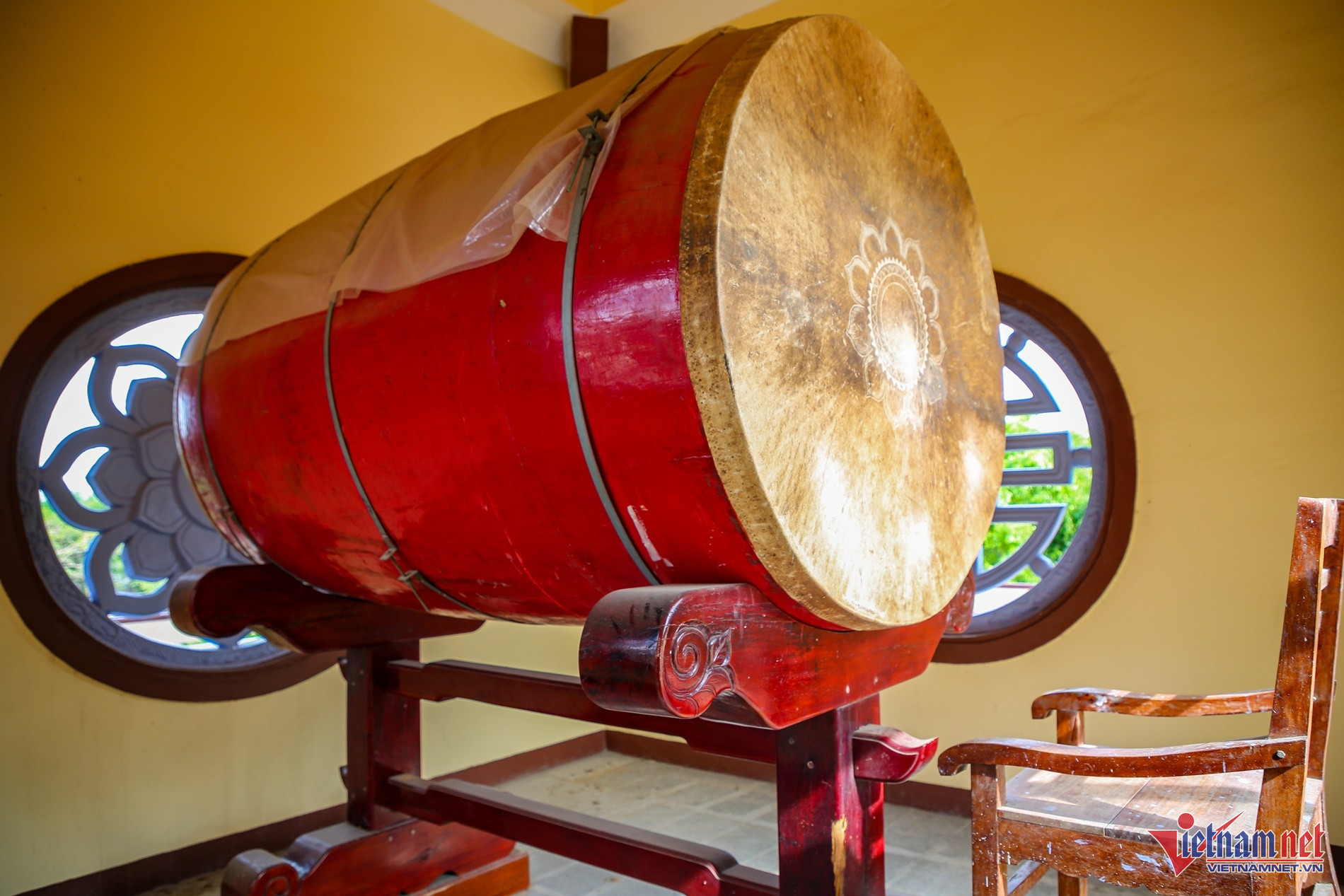
Nhan Son Pagoda, a historic and renowned site in Binh Dinh, appears in various historical texts. For instance, the Dai Nam Nhat Thong Chi (Nguyen Dynasty) Volume 9, carved pages 27 and 28, describes: “Nhan Son Pagoda: Located in Nhan Thap village, Tuy Vien district, south of Cha Ban citadel, commonly known as ‘Stone Man Pagoda.’ Inside stand two stone statues facing each other on a golden slab, over 6 ‘thuoc’ tall, one painted red, the other black. Monks dress them in robes and hats decorated with dragons and clouds, resembling living beings…”
Their story is also recorded by Bui Van Lang in Geography for Beginners of Binh Dinh Province, first published in 1933 and reissued in 1935.
Today, Nhan Son Pagoda continues to welcome pilgrims and visitors who come to worship Buddha and marvel at the ancient statues. Amidst the pace of modern life, this sacred site remains a tranquil space, preserving centuries of cultural heritage - a living museum in the heart of the Vietnamese countryside.
Ha Nam